Sreelatha Menon in New Delhi
Karutha Gengachi, a 47 year-old single woman in Alanganallur near Madurai in Tamil Nadu had trouble in her eyes for some time. It got so bad that she could barely see anything and neighbours had to intervene by taking her to the vision centre started by Aravind Eye Care in Alanganallur itself.
Soon, she was being seen by a doctor on a big broadband-connected LCD screen from Madurai's main hospital. Nagalakshmi, a paramedic-cum-coordinator at the centre, did the basic tests and declared that Gengachi had cataract in both her eyes and the surgeon on the screen advised eye surgery. She was not charged anything for the operation at Madurai's Aravind eye care for a surgery that costs Rs 6,000.
After a few months, she went back to get her second eye corrected. Today, thanks to those operations, she is writing out documents for a vendor at the registrar's office in the small town, earning enough to keep herself going.
Union Budget 2012-13: Complete coverage...
Why healthcare sector is upbeat about telemedicine
Starved of healthcare
In a country that has just three per cent of its physicians living in rural areas and 25 per cent in semi-urban areas, telemedicine has become a godsend amongst hospitals eager to figure out a way to cost-effectively serve a population starved of medical care.
Telemedicine allows doctors -- there are just 2.5 lakh of them produced every year in the country versus the 7 lakh that it needs -- to attend to multiple patients all across the country, or even the world, without ever leaving their hospitals.
A doctor can diagnose a patient, prescribe medication and treatment, or simply educate a patient on a particular issue without having the patient spend time and money travelling to a major town for a diagnosis. Hospitals benefit by being able to distribute their brand to areas that could soon become important revenue centres.
Union Budget 2012-13: Complete coverage...
Why healthcare sector is upbeat about telemedicine
Alanganallur, for instance, is one of the 39 vision centres run by Aravind in Tamil Nadu and Puducherry as part of its telemedicine network which is anchored by its five hospitals. Apollo recently announced plans to open 1,000 telemedicine centres in the next three years.
"It's a huge market and we have tapped only some .001 per cent of the total potential," says K Ganapathy, president Apollo Telemedicine Networking Foundation and president of Telemedicine Society of India.
"We are open to partnerships with state governments as well as franchise models and are working out other means,'' he adds.
Ganapathy says that while 700 million people in India have access to mobile phones, the tele-consultations market will roughly be 50 to 75 million.
Why healthcare sector is upbeat about telemedicine
Amongst the 105 Apollo centres, he says, "some make profit while some don't." Apollo claims to have done about 70,000 consultations so far through these centres since 1999, when it set up the first of them in Aragonda in Chittoor District in Andhra Pradesh.
That may be impressive statistics but is dwarfed by Narayana Hrudayalaya's operations, which boasts the largest telemedicine network in the world.
The hospital has 900 telemedicine centres in 60 countries -- 800 are in India while 50 are in Africa, West Asia, Asia and the Far East -- and offers 3.5 lakh tele-consultations annually, without charging as much as a rupee for it.
The reason for HR's impressive reach is thanks to the Indian Space Research Organisation which provided a dedicated spectrum from their satellite to Hrudayalaya to conduct activities across their centres. Of these, 340 centres were set up by ISRO while the rest are private and state government units in North East, Orissa, Andhra Pradesh, Bengal and Tamil Nadu.
Union Budget 2012-13: Complete coverage...
Why healthcare sector is upbeat about telemedicine
Different models
There is no one standard business or operational model in the world of telemedicine. At Hrudayalaya, teleconsultations happen side-by-side with the routine Out Patient Department (OPD) work for specialists at the main hospital in Bengaluru.
NH has installed telemedicine equipment in every OPD so that the specialist takes turns in seeing his virtual and physical patients every day, without any difficulty, says Abhay Singhvi CEO, Preventive Health and Telemedicine at Narayan Hrudayalaya.
NH offers a slightly different model from Apollo's. Of its 800 centres, none have been set up by Hrudayalaya. "We offer our expertise to centres who want to link up with us and take our name, says Singhvi. "We don't spend anything as Government is providing everything free of cost to us," he says.
Union Budget 2012-13: Complete coverage...
Why healthcare sector is upbeat about telemedicine
Image: Fortis Hospital has a similar franchise model to Hrudayalaya's.Fortis Hospital, which is setting up a new facility in Gurgaon in the outskirts of Delhi, has a similar franchise model to Hrudayalaya's.
The hospital chain plans to offer telemedicine from there to centres across the country and its centre in Noida is already running a telemedicine service to 60 franchise units in 10 states. These centres keep the hospital's flag-flying in new terrain without having to physically go there or invest a single paisa.
Apollo's business model is a little different as it chooses to set up its own centres at the cost of Rs 5 lakh per centre. Recurring cost is about two and a half lakh per year per centre. It charges Rs 20 per patient for three visits to the centre.
Union Budget 2012-13: Complete coverage...
Why healthcare sector is upbeat about telemedicine
Photographs: Lucy Nicholson/Reuters
Of the patients who came to the centres, only 10 per cent were required to go to the hospital for further treatment. Aravind recovers it through fees and sale of glasses.
Perhaps the most unexpected role model for the success of telemedicine lies in the success of the Tripura government's efforts in replicating the Aravind model -- a public-private partnership with Infrastructure Leasing & Financial Services Limited (IL & FS), with the eye hospital lending them necessary expertise.
Under the unique PPP, the State Government has set up about 40 vision centres and plans to expand further. IL & FS invested Rs 10 lakh in a pilot project on telemedicine 75 kilometres away from Agartala and nudged the reluctant Communist government into holding hands with a private partner for scaling up the eye care model. With just 18 ophthalmologists catering to a population of 37 lakh, the government had no option but to agree.
Why healthcare sector is upbeat about telemedicine
Photographs: Reuters
IL & FS identifies patients and lines up doctors from Tripura's Indira Gandhi memorial eye hospital, and in times of need, from Aravind and other willing hospitals in Bengal, and connects them.
Under this model, the cost of consultation per patient comes to Rs 280 and salaries of IL & FS teams as well as IT costs and of service providers comes to Rs 1.40 crore (Rs 14 million) per year which is paid by the government.
IL & FS hopes for an extension of the partnership for another three years. The model has proved successful enough for the Bihar government to rope in IL & FS for running Ayush centres, while Gujarat plans 40 centres linked to tertiary and secondary hospitals.
Why healthcare sector is upbeat about telemedicine
The future
Many anticipate an infinitely more advanced version of telemedicine in the coming years. Hrudayalaya's Singhvi expects to soon employ futuristic applications like health phones and robotic surgery.
"Remember the James Bond movies and the video phones in them? We plan to do something like that soon. Health would be home delivered as on Flipkart,'' he says.
"Health phones are being developed and people can choose any health provider and get a pre paid or post paid service,'' he says, adding that robotic surgery would be the next stop for Hrudayalaya in a decade or so.
A prototype mobile phone monitoring system developed by a team of engineers in Loughbourough University of UK and Indian experts was unveiled in 2005.
It transmits a patient's vital signs such as blood pressure, blood glucose, oxygen saturation, and even electrocardiogram (ECG) heart signals to a hospital or clinic anywhere in the world.
Why healthcare sector is upbeat about telemedicine
The team has tied up with London's Kingston University, the Institute of Technology Delhi, Aligarh Muslim University, and the All India Institute of Medical Science to develop a more portable device.
Still, the promise of telemedicine is in its fundamentally basic enablers which is essentially cable connectivity and a screen. Singhvi is looking forward to the 12th Plan which is expected to make broad band available to the common man as a sort of entitlement.
"That will change the way telemedicine works. Even now all you need to get connected is a broad band and a computer. You can just skype and NH telemedicine runs 24 x7 for anyone who wants it,'' he says.
Why healthcare sector is upbeat about telemedicine
Challenges
Despite the promising activity in the field, observers say that there is a long way to go before it stands a chance at becoming a pervasive way of healthcare delivery.
"A good business model is needed too to make it attractive and viable. You also urgently need a policy and law to address licence issues,'' says SK Mishra who heads the telemedicine project in Sanjay Gandhi Postgraduate Institute of Medical Sciences, in Lucknow.
"How can a patient be prescribed medicines through long distance calls unless there is a law which regulates this ?'' he asks.
The mad rush for telemedicine amidst claims of poor earnings may look like a contradiction. But in the long term, the hospitals are laying the foundation for future partnerships with state governments for rural markets, which is why they will be more than content to shoulder the costs for penetrating rural India for now.
Union Budget 2012-13: Complete coverage
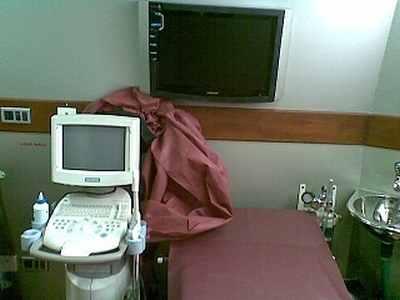

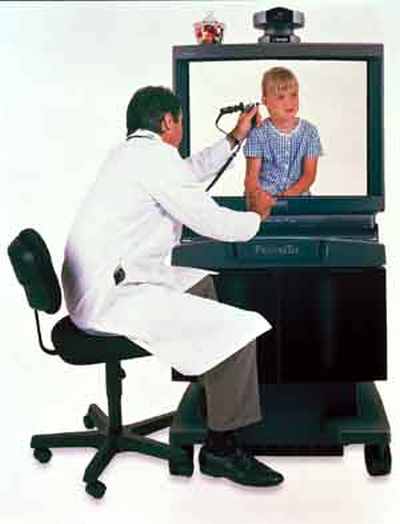



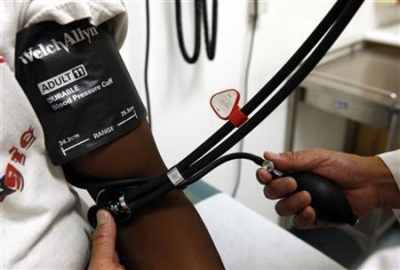


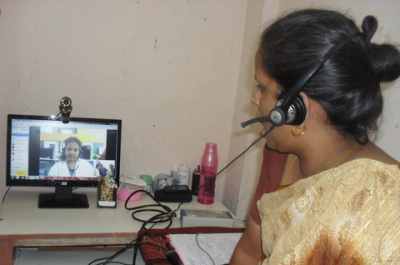
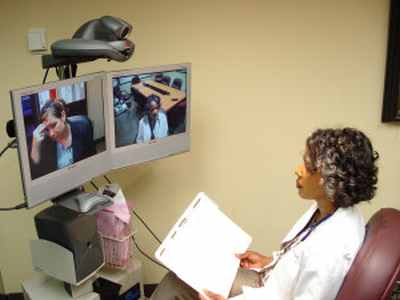

article